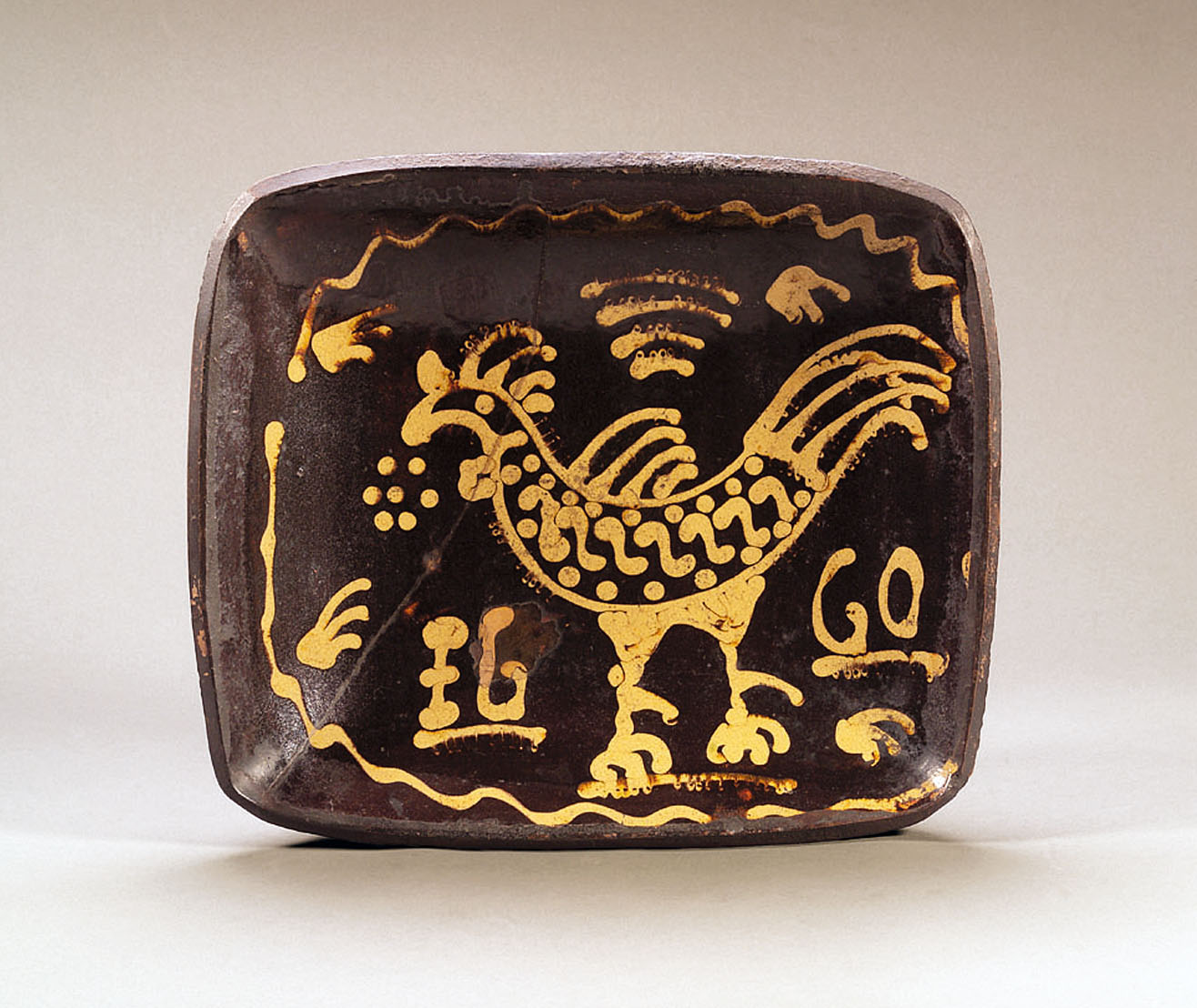There is a 19th-century English roasting dish that has lived in the Mingeikan (The Japan Folk Crafts Museum) since this venerable institution opened its doors to the public in 1936. How this piece of slipware (pottery decorated with a mixture of clay and mineral, known as "slip") got there is something I've wondered about since I first saw it in the museum some years ago. A visit to the Mingeikan to ask some questions of the staff about its journey to Tokyo revealed an interesting chain of cultural exchanges between Japan and England that influenced many of the leading ceramicists of the early 20th century — in both the East and West.
The dish's story begins with the publication of a 1909 book written by Charles J. Lomax titled "Quaint Old English Pottery," which contains photographic plates of 18th- and 19th-century English slipware. That same year, a young British etcher, Bernard Leach, arrived in Japan and befriended potter Shoji Hamada and philosopher Soetsu Yanagi, who founded the Mingeikan to promote the folk crafts he loved so much and store his enormous collection of crafted objects. In an 1943 essay on English slipware, Yanagi explains how he first came across Lomax's book in 1923 on a shelf at the back corner of the second floor of Tokyo's Maruzen bookstore. It was too expensive for him to buy at the time, so he returned to the store repeatedly to study it. When Leach — whom Yanagi had convinced to take up pottery — saw the book, he was greatly inspired by the illustrated ceramics, which seemed to resonate with techniques that also existed in Japan. Leach and Hamada traveled to England together in 1920 and set up the Leach Pottery together at St. Ives, Cornwall. There they came across and collected surviving examples of slipware dishes and found shards of old slipware in newly plowed fields. They began to experiment with their own slipware and Hamada claims to have learned how to achieve a slip pattern with by spreading cream on top of bread and blackberry jam. Terry Ellis (a far greater expert on the subject than I) comments, "I'm struck by how much Hamada 'got' England during his three years in St. Ives. It seems he and Leach invented studio pottery through pioneering research and a kind of hit or miss amateurism."
At the end of Hamada's three years in England he returned to Japan with 10 large slipware dishes he had collected. In his 1943 essay, Yanagi describes feeling a "dumbfounding exhilaration" as he watched these "simple and utilitarian" ceramics being unwrapped at fellow potter Kanjiro Kawai's place. "The form was sound," he writes, "the glaze was beautiful and the motifs had a freedom and spontaneity with lovely taste."

















With your current subscription plan you can comment on stories. However, before writing your first comment, please create a display name in the Profile section of your subscriber account page.